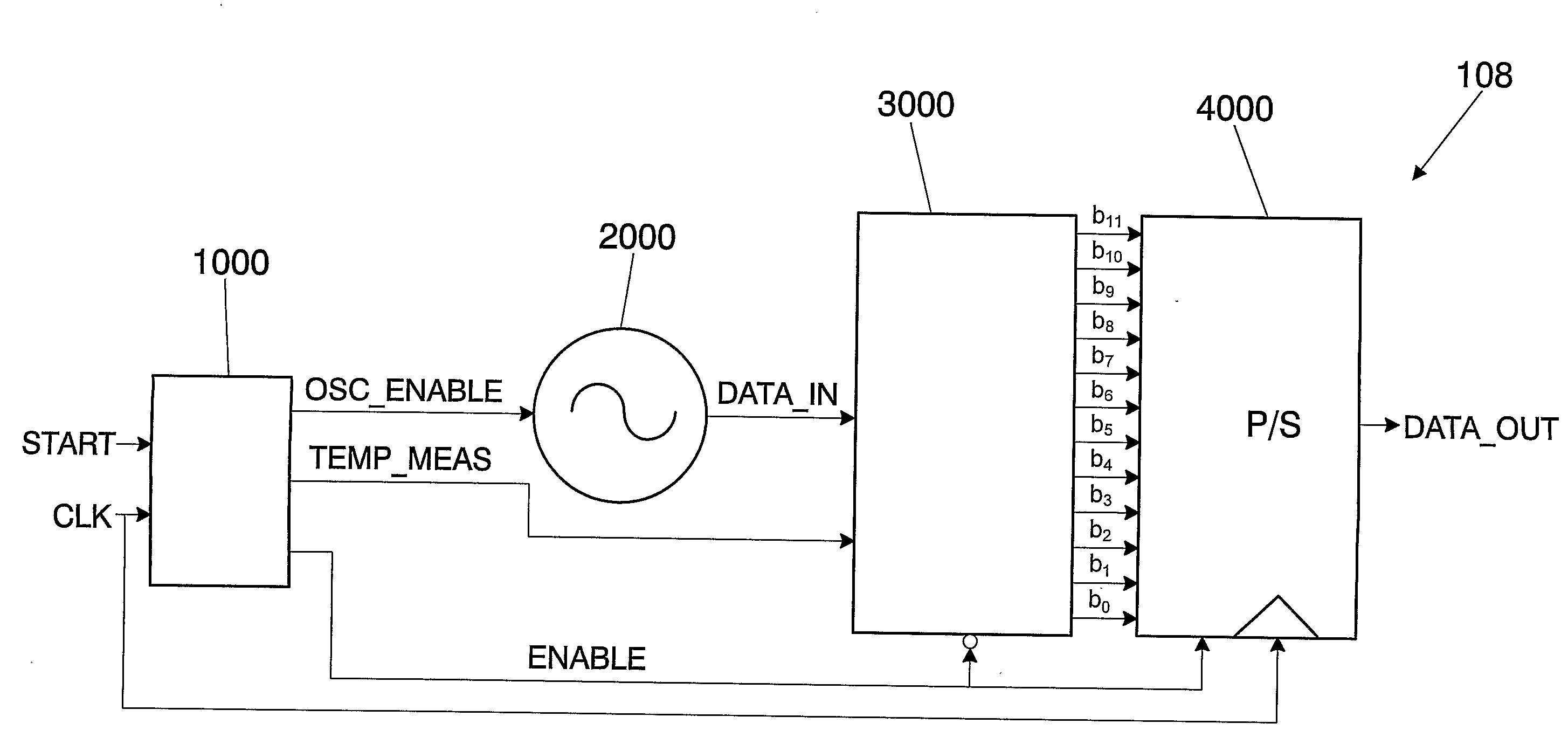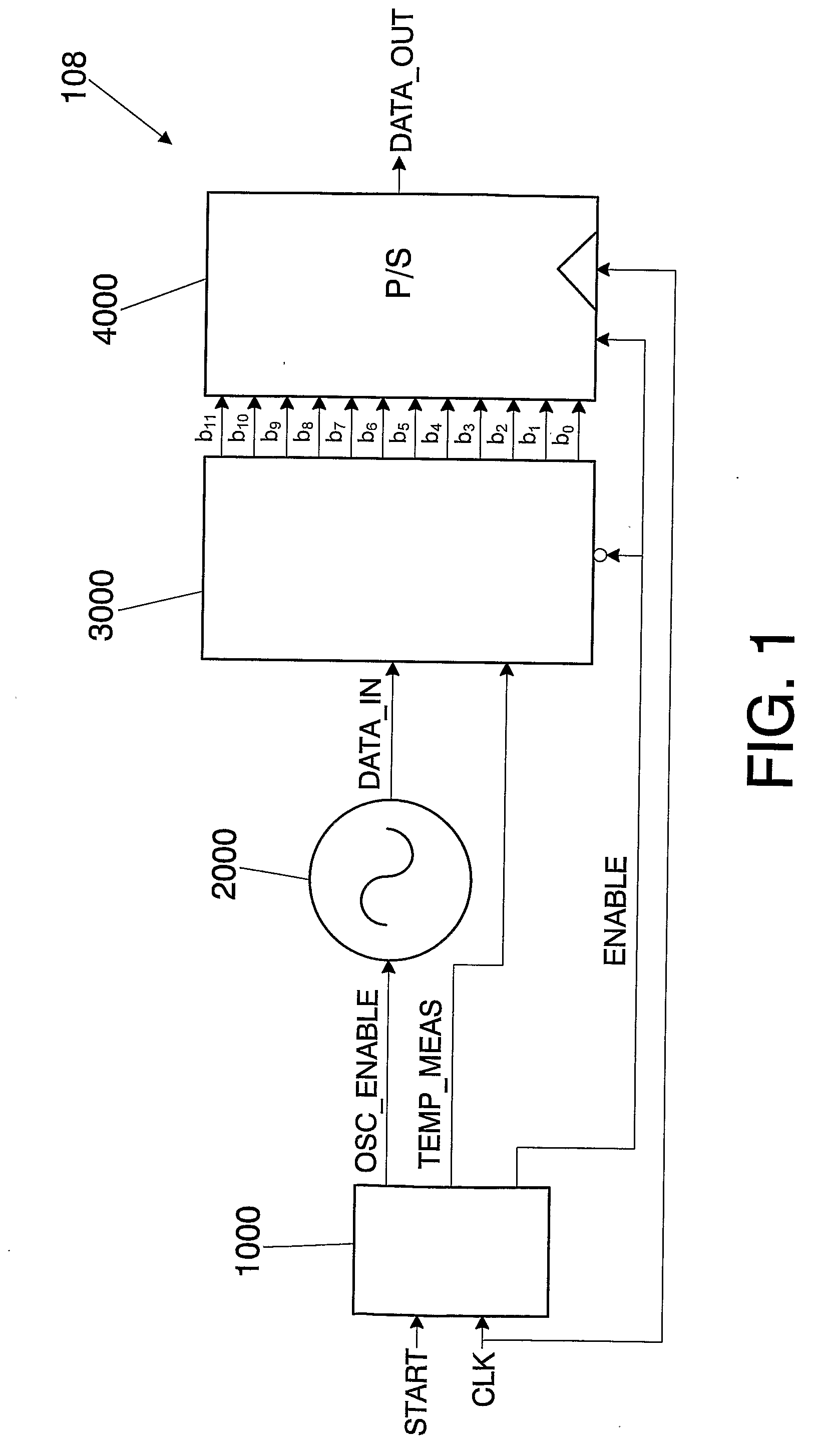Wireless temperature sensor
a temperature sensor and wireless technology, applied in the field of integrated temperature sensors, can solve the problems of difficulty in adapting the core (rc) according to the desired temperature variation range, and achieve the effect of low cost and easy operation
- Summary
- Abstract
- Description
- Claims
- Application Information
AI Technical Summary
Benefits of technology
Problems solved by technology
Method used
Image
Examples
Embodiment Construction
[0041]FIG. 1 depicts the block diagram of the temperature sensor 108 according to one embodiment of the present invention. The temperature sensor 108 of FIG. 1 can be implemented in a RFID (radio frequency identification) transponder or in any other wireless transponder in general.
[0042]The sensor 108 of FIG. 1 comprises an oscillator 2000, a binary counter 3000 and means for generating a serial digital signal 4000. The sensor 108 preferably further comprises control means 1000.
[0043]FIG. 1 shows the control means by means of a control logic block 1000, a temperature-dependent oscillator 2000, a binary counter 3000 and a parallel-to-serial converter 4000. In this embodiment of the present invention, the inputs to the sensor 108 are START and CLK. The first one (START) is a step signal used to initiate the measurement process of the sensor 108. Specifically, the start-up of the sensor 108 occurs with the rising flank of the signal “START”. The second one is the clock signal (CLK) use...
PUM
 Login to View More
Login to View More Abstract
Description
Claims
Application Information
 Login to View More
Login to View More - R&D
- Intellectual Property
- Life Sciences
- Materials
- Tech Scout
- Unparalleled Data Quality
- Higher Quality Content
- 60% Fewer Hallucinations
Browse by: Latest US Patents, China's latest patents, Technical Efficacy Thesaurus, Application Domain, Technology Topic, Popular Technical Reports.
© 2025 PatSnap. All rights reserved.Legal|Privacy policy|Modern Slavery Act Transparency Statement|Sitemap|About US| Contact US: help@patsnap.com



